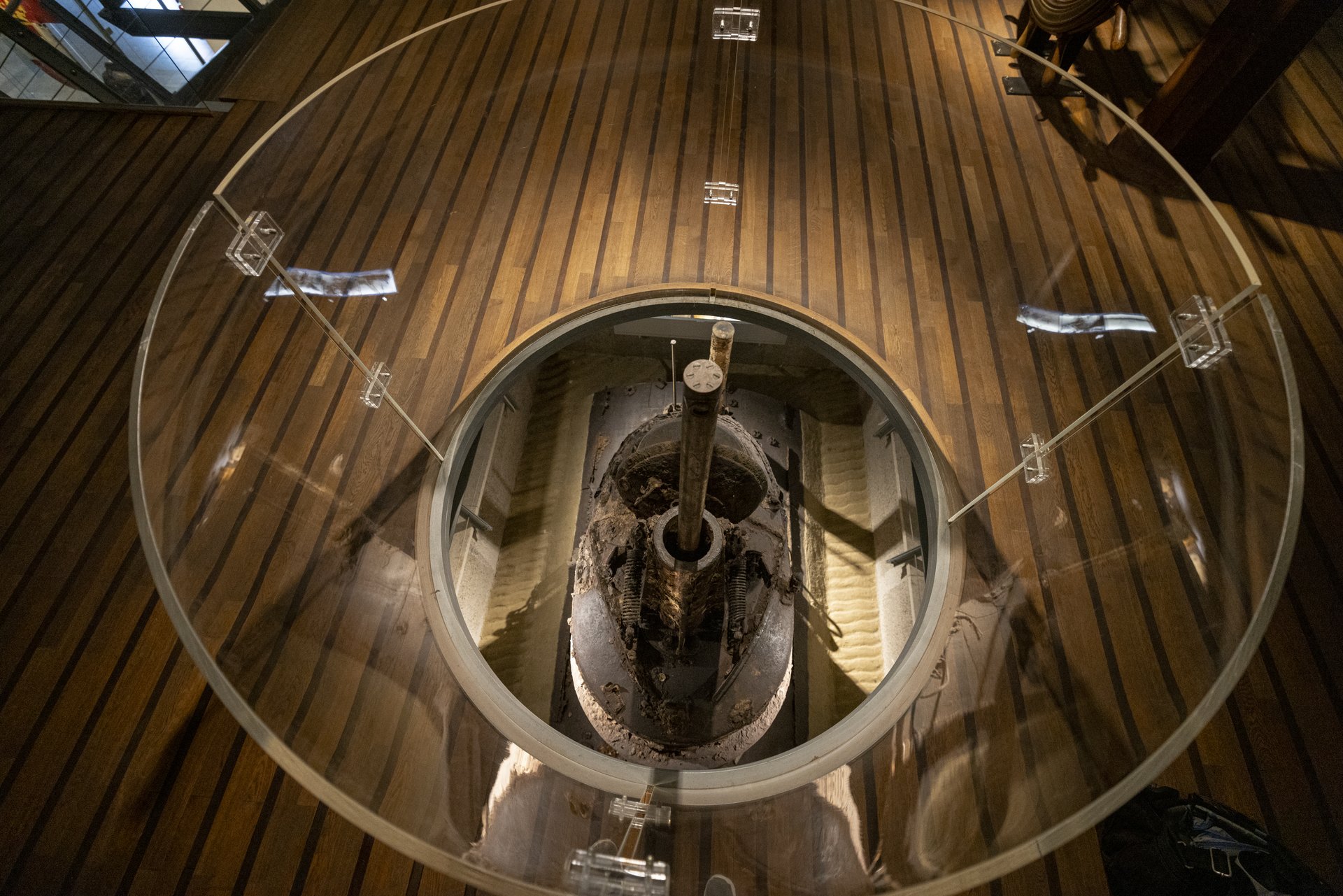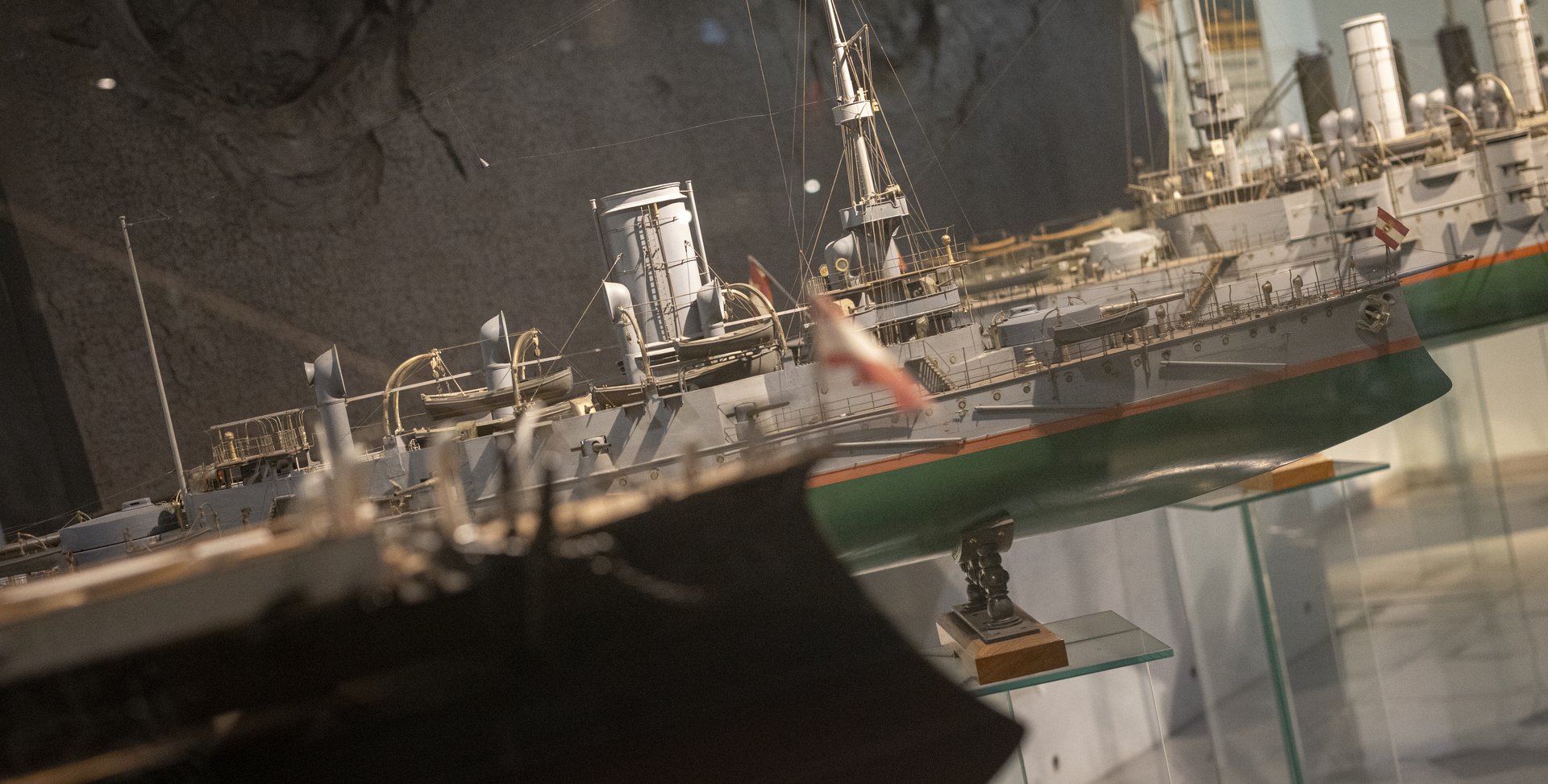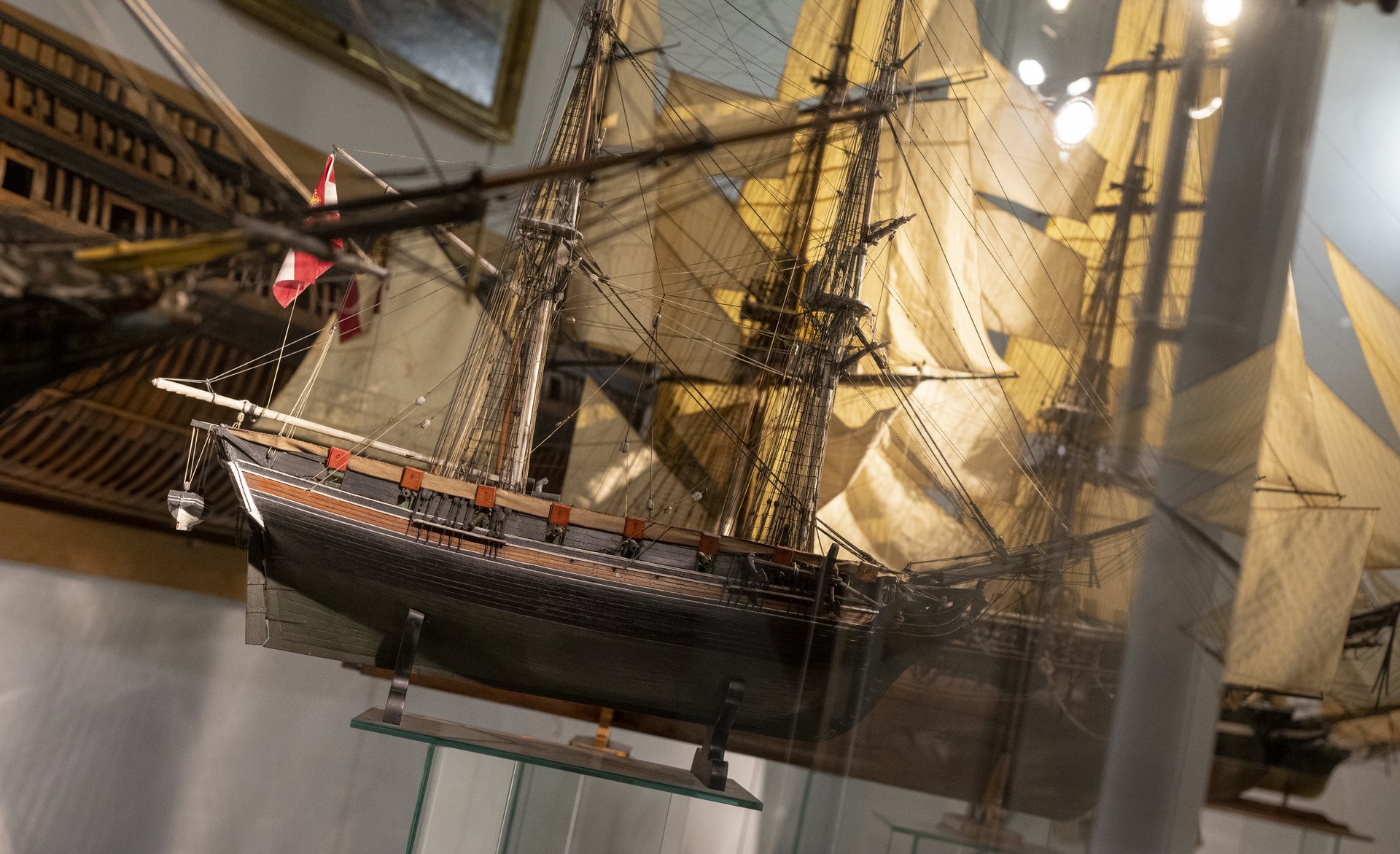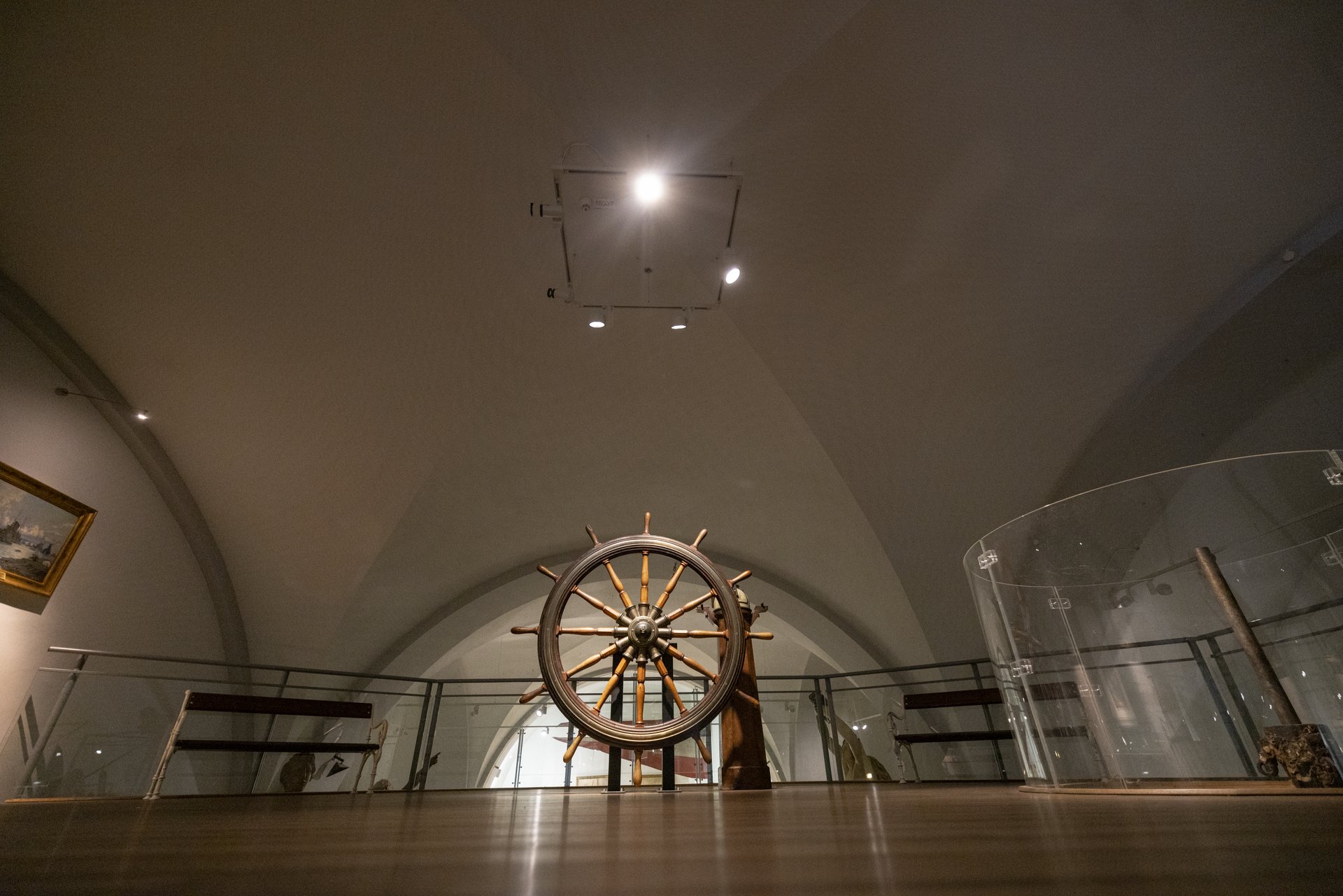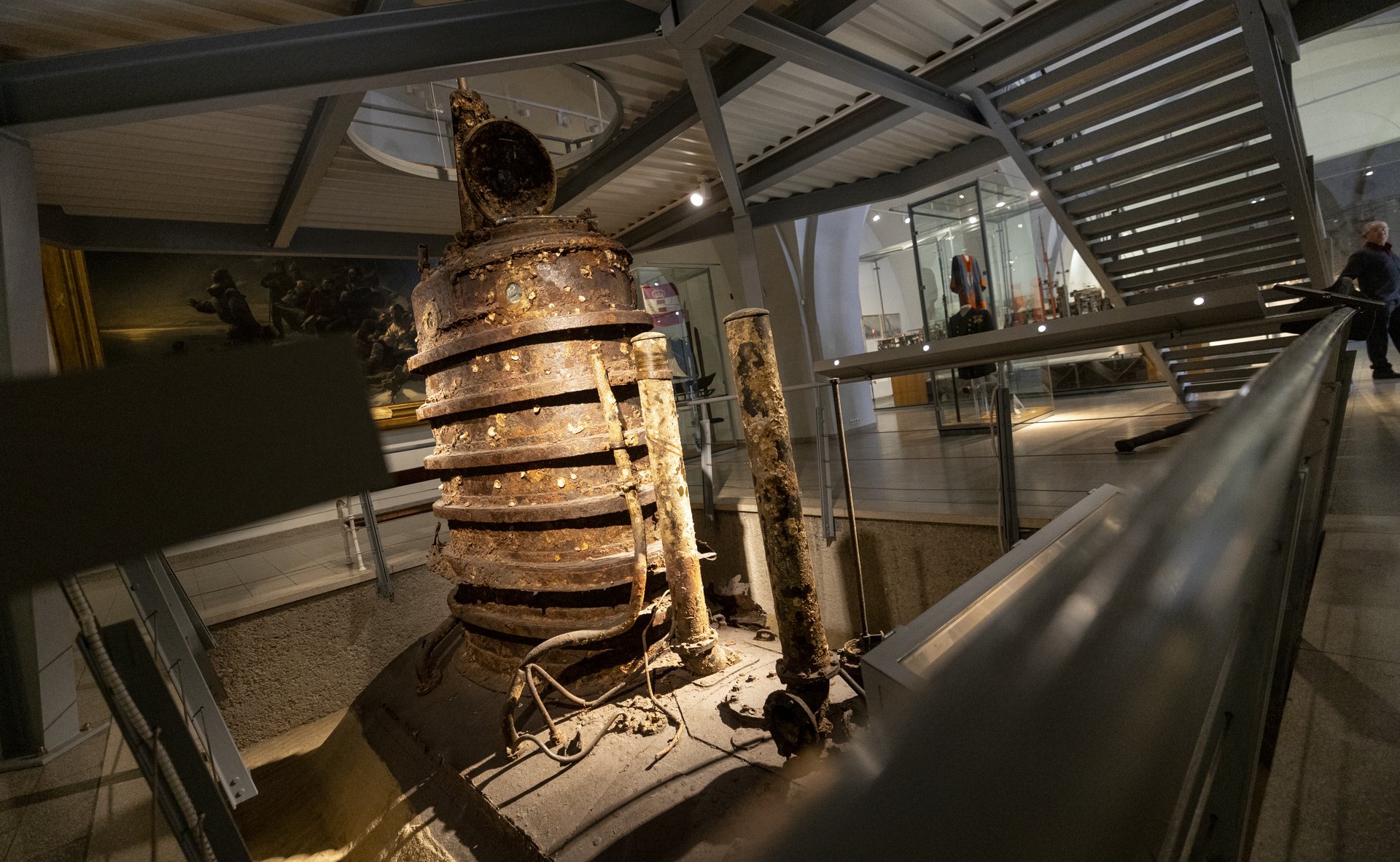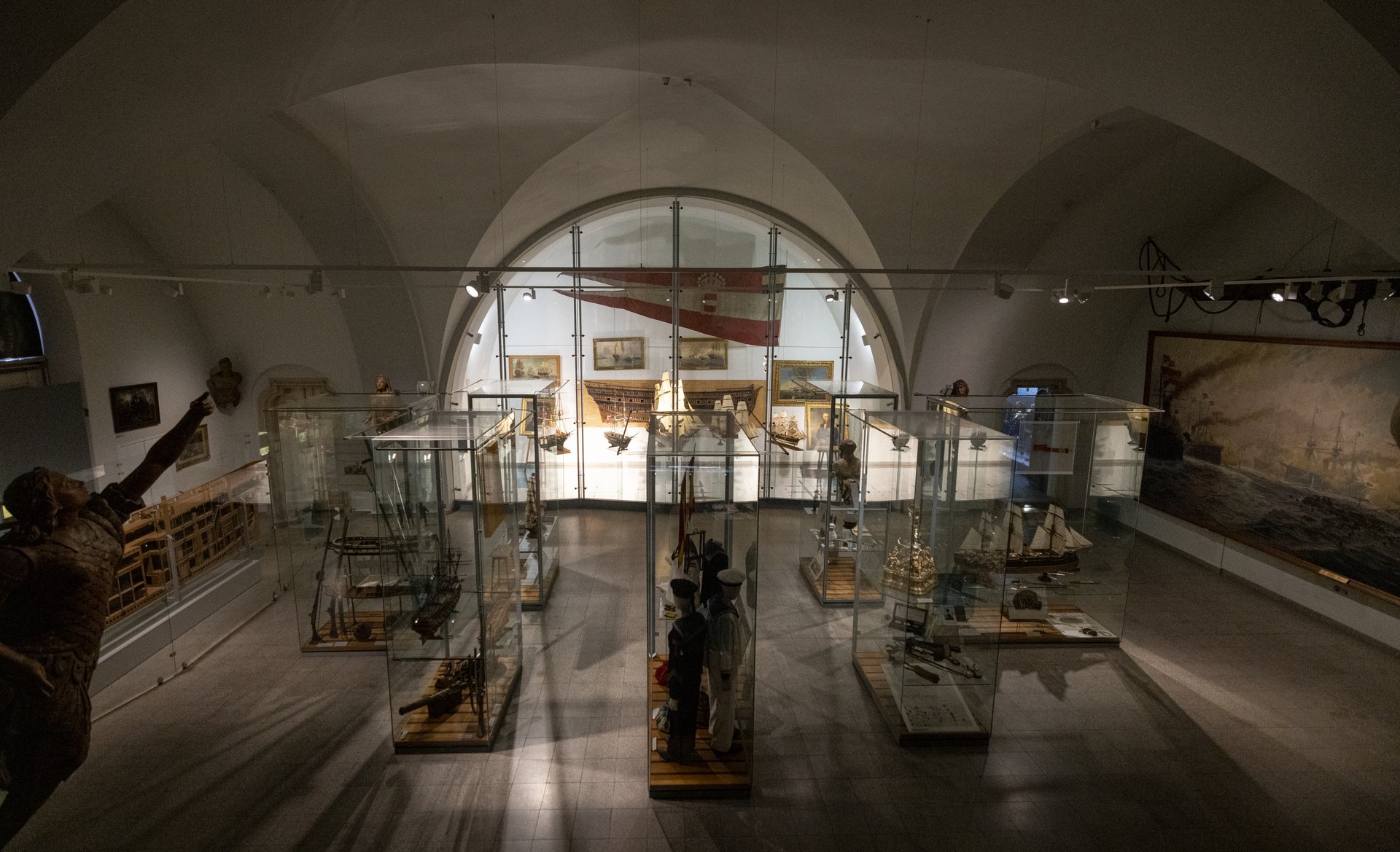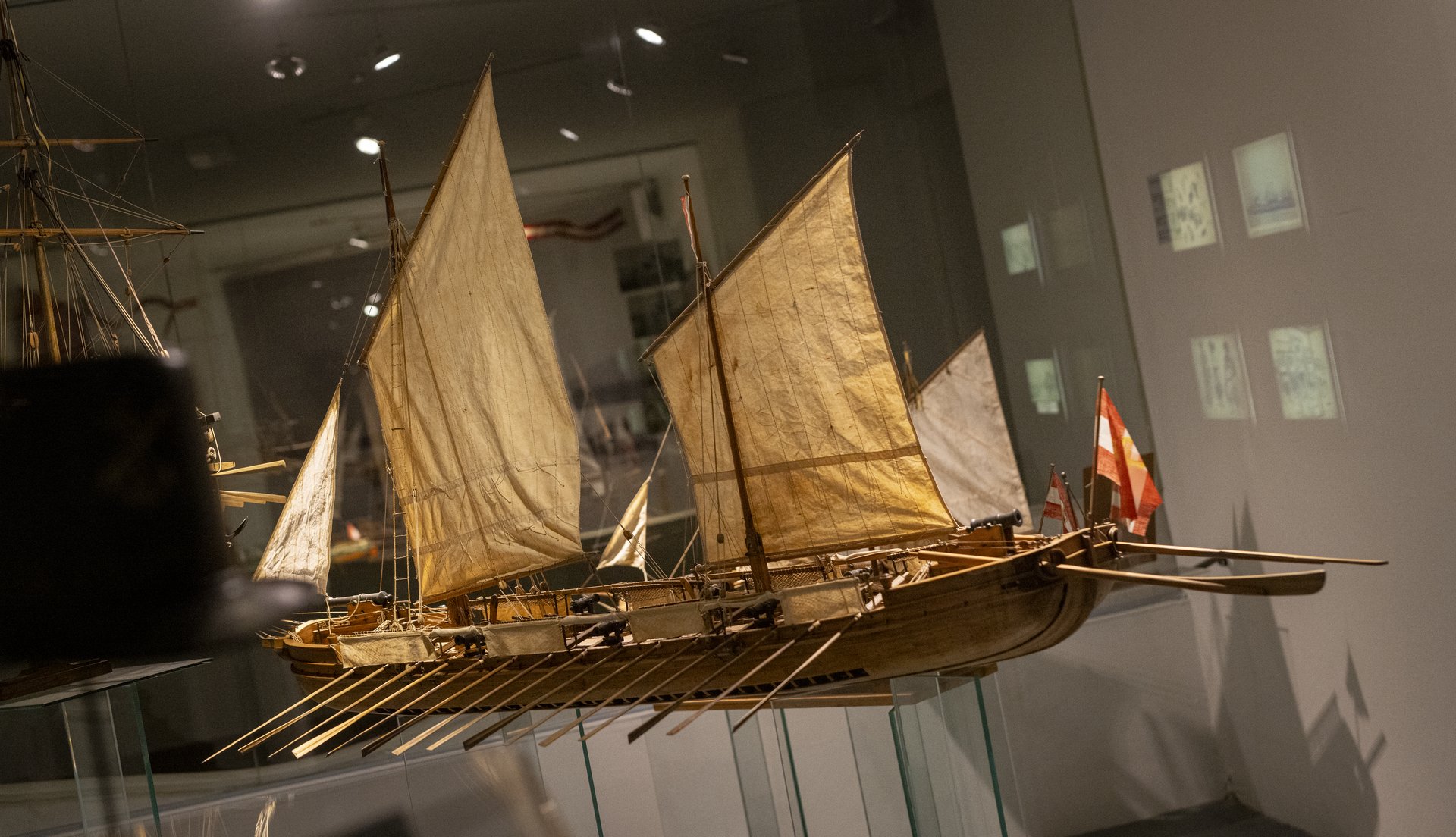Austrian naval power
Download: Austrian naval power
In the former Army Museum (in Austro-Hungarian times), the Imperial Navy was barely represented, since there was a designated naval museum in the naval port of Pola.
During the reconstruction of the Museum of Military History after the Second World War, a separate exhibition space was created for this important part of Austrian military history, now one of the centrepieces of the permanent exhibition.
Importance of the Austrian navy
The Habsburg Monarchy already had warships in the 16th and 17th centuries. These were primarily used for coastal defence and operations on the Danube, the riverine fleet there reaching considerable strength.
After the occupation of Venice following the Peace of Campo Formio (1797), Austria suddenly possessed a substantial navy. During the first half of the 19th century, its main port was Venice, until Pola and Cattaro had also developed into large naval ports and then served as bases until the end of the Habsburg Monarchy.
Foreign and security policy
The navy became increasingly important for the foreign and security policy of the Habsburg Monarchy in the second half of the 19th century.
Naval involvement in the German-Danish War 1864 and the War of 1866 highlighted its potential, and Vice Admiral Wilhelm von Tegetthoff's victory over the Italian fleet at Lissa (1866) enhanced its prestige.
In this section of naval history, figureheads and ship models are on display, as well as the only surviving balloon bombs (Uchatius system) used in the Siege of Venice in 1849. Also on display are memorabilia of several admirals and depictions of Austrian naval forces.
The navy as instrument of research
The Imperial Navy was not only a means of projecting military power but also an instrument of research. Expeditions by Austrian ships were used for training crews and to "fly the flag" on the world's oceans. They also served to gain scientific knowledge.
A model of frigate SMS Novara together with drawings and watercolours by Joseph Selleny commemorate the first world circumnavigation by an Austrian warship (1857 – 1859). Rear Admiral Archduke Ferdinand Maximilian - the initiator of this voyage - is also commemorated here with paintings, personal items and equipment as well as various medals and awards.
Among the non-military maritime operations presented in the exhibition, the most prominent is the Austro-Hungarian Polar Expedition 1872 - 1874, to which we owe the discovery of the Franz-Josef-Land archipelago.
Battleships as status symbols
Under the overall command of Hermann von Spaun (1833 - 1919), Rudolf Montecuccoli (1843 - 1922) and Anton Haus (1851 - 1917), the Austro-Hungarian fleet was modernised and considerably strengthened over time.
Just as Archduke Ferdinand Maximilian had worked to expand the fleet in the middle of the 19th century, heir apparent Archduke Franz Ferdinand became an important supporter of the navy in the final years of the Habsburg Monarchy.
Support for trade and industry
In that "age of imperialism", navies were seen not only as means of projecting military power but also as an instrument for supporting trade and industry, and above all as symbol of Austria's status as a great power. Therefore, numerous new ships were built in Austria-Hungary.
Technical development and capital ship construction before the First World War are documented in the exhibition, showing unique objects and ship models. Among these, the six-metre cutaway model of the last flagship of the Austro-Hungarian navy, SMS Viribus Unitis, stands out as the largest object.
The end of the navy
During the First World War, the Austro-Hungarian navy was mainly occupied with protecting the Dalmatian coast. Due to the Allied blockade near Otranto, its operational area was limited to the Adriatic Sea.
Naval warfare in the Adriatic Sea typically did not rely on heavily armoured battleships but on smaller units - destroyers, torpedo boats and submarines. Together with naval aviation they kept coastal waters and supply routes across the Adriatic Sea free of enemy ships.
Submarines became increasingly important during the war and they were the only ships to operate beyond the Strait of Otranto. A special object in the exhibition is the turret of Austro-Hungarian submarine U 20, sunk in the northern Adriatic Sea in 1918 and raised in 1962.
This object also symbolises the end of the Austro-Hungarian navy. After the collapse of Austria-Hungary in autumn 1918, the ships were transferred to and divided up by the successor and victor states.
The history of Austrian naval power had come to an end.

